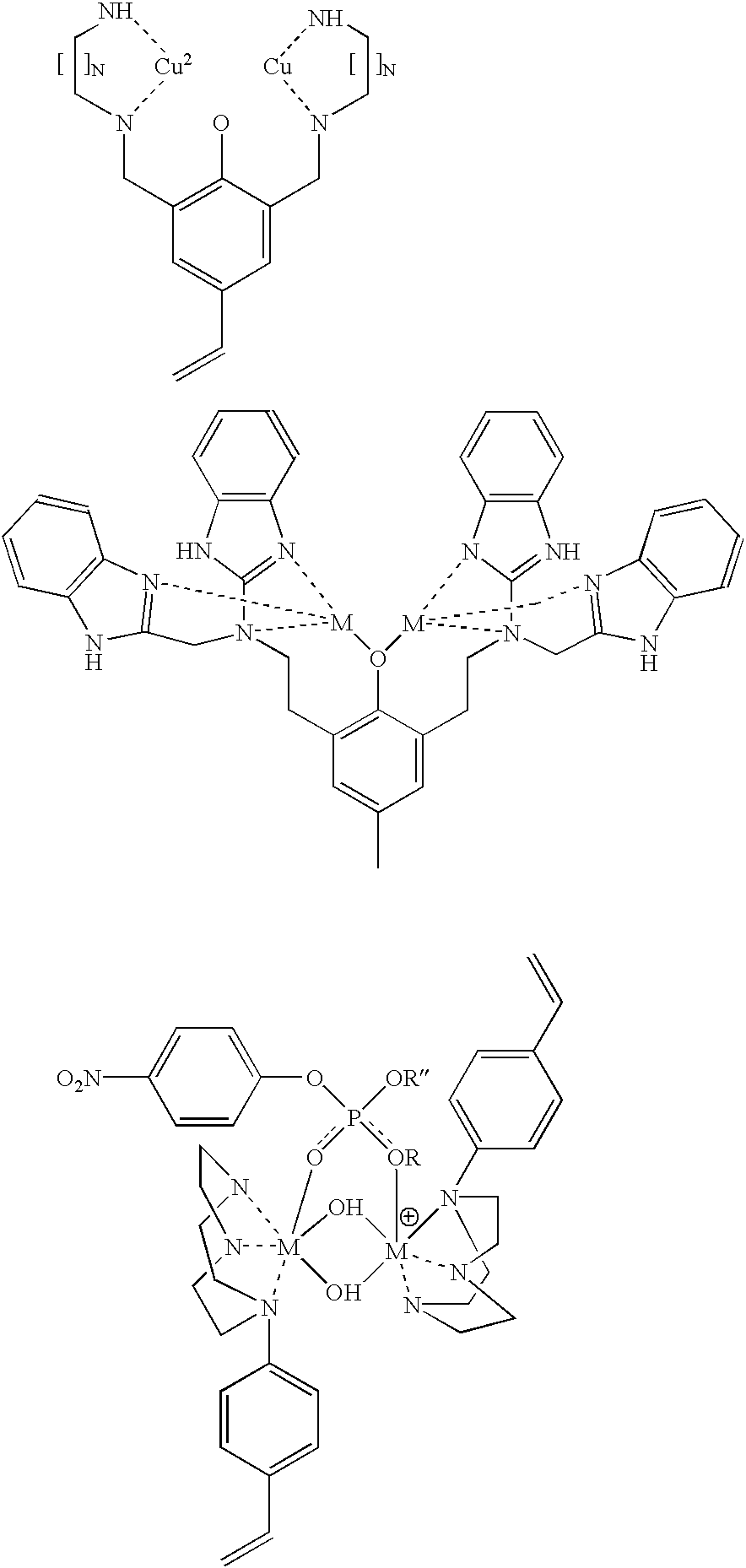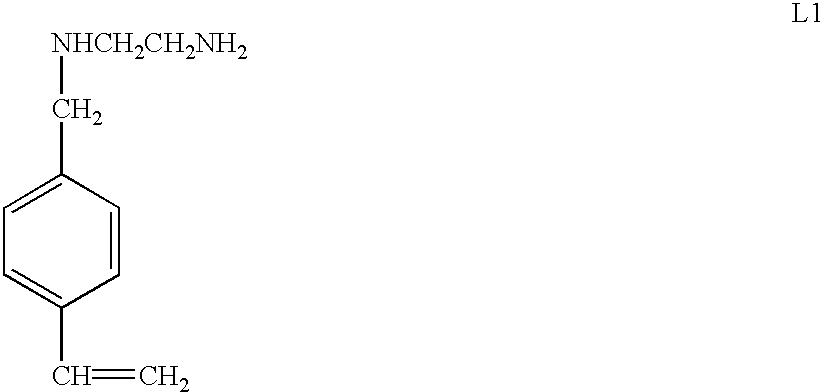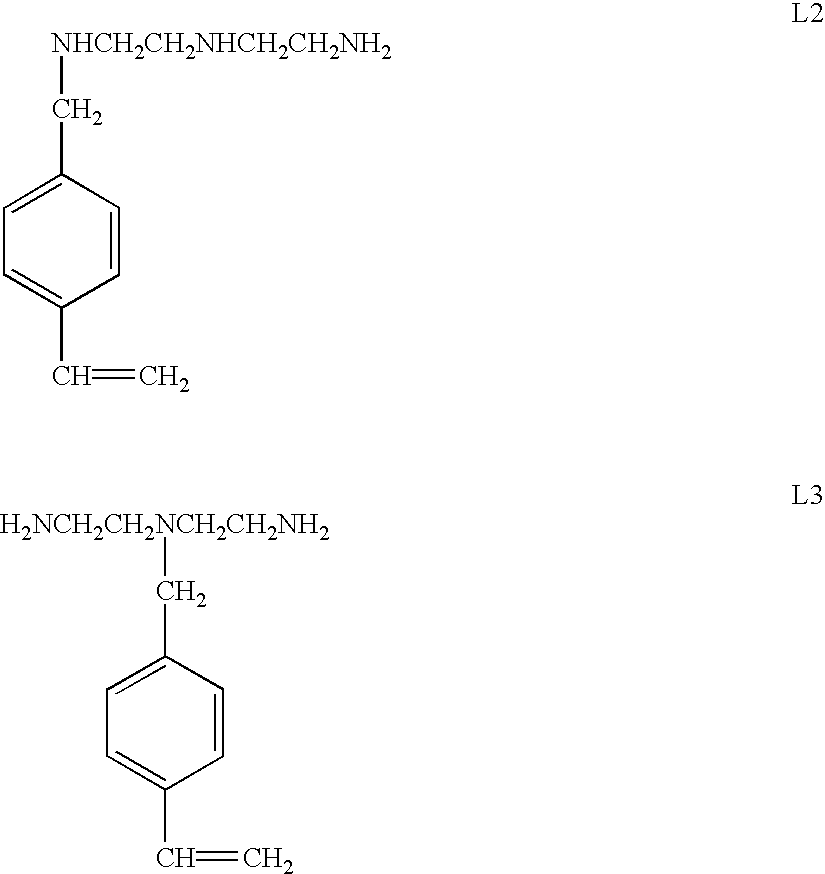Immobilized metalchelate complexes for catalysis and decontamination of pesticides and chemical warfare nerve-agents
a technology of metal chelate complexes and nerve agents, which is applied in the direction of organic compounds/hydrides/coordination complexes, physical/chemical process catalysts, chemical apparatus and processes, etc., can solve the problems of bleaching corrosive to many surfaces, large amount of bleaching needs to be used, and the activity of bleaching declines
- Summary
- Abstract
- Description
- Claims
- Application Information
AI Technical Summary
Benefits of technology
Problems solved by technology
Method used
Image
Examples
example 1
[0038] A polyurethane prepolymer, in this case PREPOL from Lendell Manufacturing, was mixed directly with an amino group-containing chelate and reacted to form a chelate-containing polymer. The mixture was stirred vigorously to allow the amino groups to react with the isocyanate groups. The resulting polymer was washed thoroughly with water and contacted with a highly concentrated solution of Cu(II) ions; the excess metal ions were washed away and the resultant metallated polymer was ready to be used as a catalytic polymer.
example 2
[0039] The procedure of Example 1 was followed except that the PREPOL was mixed with an amino-group containing chelate in the presence of a minor amount of water as a solvent. The presence of water during the reaction between the amino groups and the isocyanate groups resulted in the formation of polymeric foam. The resultant polymer was washed thoroughly with water and contacted with a highly concentrated solution of Cu(II) ions; the excess metal ions were washed away and the resultant metallated polymer was ready to be used as a catalytic polymer.
example 3
[0040] A suspension of silica and technical grade EDA-silane was refluxed for 20 to 24 hours in toluene, the suspension was filtered, and the silica was washed with methanol. The modified silica was heat treated at 70-90.degree. C. for 3 to 24 hours to produce a bonded silica. The resulting bonded silica was contacted with a highly concentrated solution of Cu(II) ions; the excess metal ions were washed away and the obtained metallated silica gel was ready to be used as a catalytic powder.
PUM
| Property | Measurement | Unit |
|---|---|---|
| Time | aaaaa | aaaaa |
| Adsorption entropy | aaaaa | aaaaa |
Abstract
Description
Claims
Application Information
 Login to View More
Login to View More - R&D
- Intellectual Property
- Life Sciences
- Materials
- Tech Scout
- Unparalleled Data Quality
- Higher Quality Content
- 60% Fewer Hallucinations
Browse by: Latest US Patents, China's latest patents, Technical Efficacy Thesaurus, Application Domain, Technology Topic, Popular Technical Reports.
© 2025 PatSnap. All rights reserved.Legal|Privacy policy|Modern Slavery Act Transparency Statement|Sitemap|About US| Contact US: help@patsnap.com



